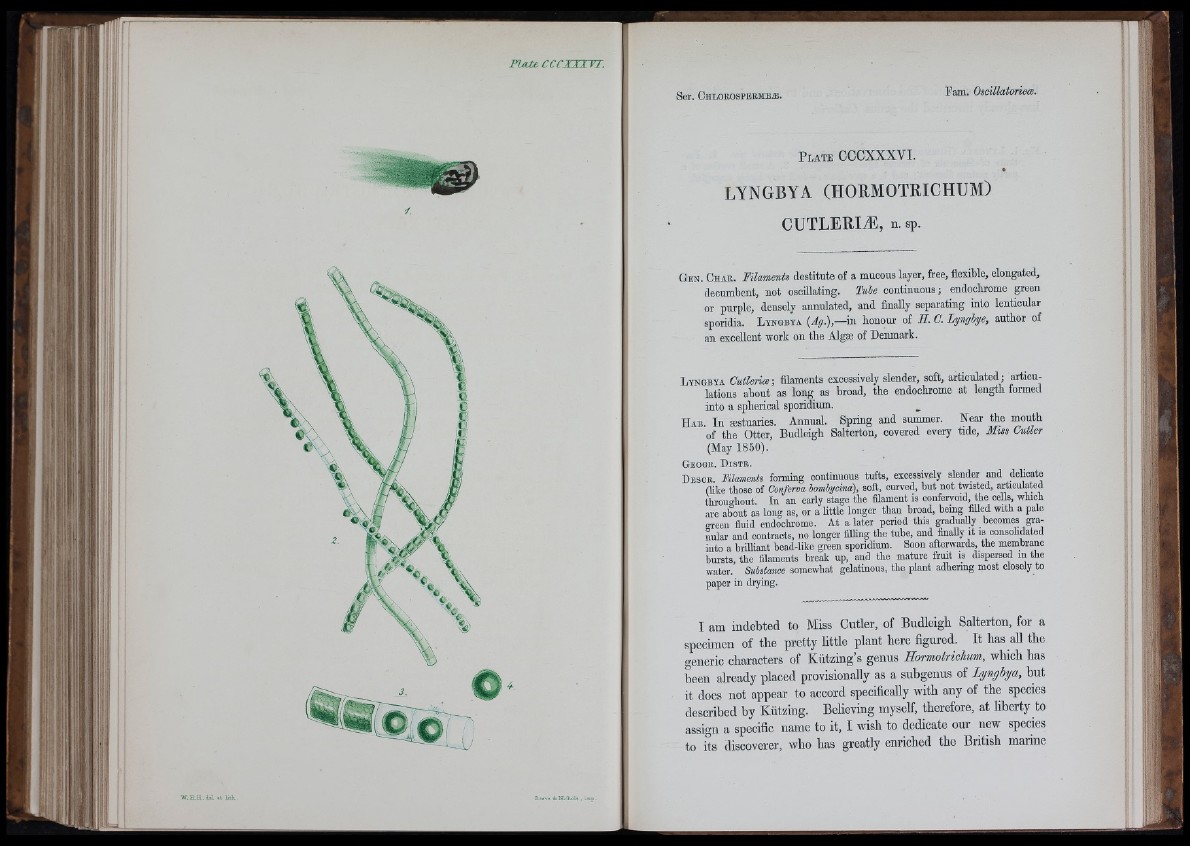
I S' p
? li I'i
!i 4:;
y i Reave StHiäusle ,
P l a t e CCCXXXVI.
LYNGBYA (HORMOTRICHUM)
CUTLERIÆ, n. sp.
G e n . C h a r . Filaments destitute of a mucous layer, free, flexible, elongated,
decumbent, not oscillating. Ta le continuous; endoclirome p:een
or purple, densely annulated, and finally separating into lenticular
sporidia. L y n g b y a {Ag.),— in honour of H . C. Lyngbye, author of
an excellent work on the Algae of Denmark.
L y n g b y a Cutleriæ; filaments excessively slender, soft, articulated; articulations
about as long as broad, the endochrome at length formed
into a spherical sporidium.
I I a b . In æstuaries. Annual. Spring and summer. Near the mouth
of the Otter, Budleigh Salterton, covered every tide. M m Cutler
(May 1850).
G e o g r . D i s t r .
D e s c b . MUments forming continuous tufts, excessively slender and delicate
(hke those of Conferva lomlycina), soft, curved, but not twisted, articulated
throughout. In an early stage the filament is confervoid, the cells, which
are about as long as, or a little longer than broad, being filled with a pale
green fluid endochrome. At a later period this gradually becomes gra-
W and contracts, no longer filling the tube, and finaUy it is consohdated
into a brilliant bead-like green sporidium. Soon afterwards, the membrane
bursts, the filaments break up, and the mature fruit is dispersed in the
water. Suhstanve somewhat gelatinous, the plant adhenng most closely to
paper in drying.
I am indebted to Miss Cutler, of Budleigh Salterton, for a
specimen of tbe pretty little plant here figured. It has all the
generic characters of Kfitzing’s genus Hormotrichum, which has
been already placed provisionally as a subgenus of Lynghya, but
it does not appear to accord specifically with any of the species
described by Kiitzing. Believing myself, therefore, at liberty to
assign a specific name to it, I wish to dedicate our new specms
to its discoverer, who has greatly enriched the British marine